Blue Whale Facts – Things to Know About the Largest Animal in the World
The blue whale is by far the largest mammal belonging to the Mysticeti baleen whale family. They are the largest mammals and grow up to 150 tons and an average blue whale length is over 100 ft. They are not just massive animals, but surprisingly loud too. The scientific name of a blue whale is Balaenoptera musculus. Find out all the other interesting facts about this creature.
You might be surprised to know that you can hear the cry of a blue whale from miles away. However, these large mammals have an extremely small appetite. The fact is that they majorly survive on a diet of ‘krill’ which are small sea animals that resemble shrimps. Also, you will hardly find any other sea animal attacking a blue whale. It is mainly because of an average blue whale size and the strength of this mammal.
The danger of attacks only come from human whale hunters or some dangerous killer whales. However, killer whales prefer preying on smaller and more delicate mammals rather than the huge blue whales. It is the reason why the blue whales roam around in the marine world without any fear. They are also termed as ‘apex predator’. The meaning of this term is that a blue whale is a predator itself but cannot be preyed on by any other animals.
Table of Contents
Interesting blue whale facts
We have all heard and read about Blue whale facts, but most of us are still unaware of a few details about these huge mammals. In this article, we are presenting a list of some of the most amazing and interesting blue whale facts. Check out the list below.
1. Size of blue whales
Blue whales are by far the largest existing mammals with a recorded height of over 100 feet and a weight of almost 200 tons.
2. Color of the mammals
Do not get confused when you read ‘blue whale’ and do not find a proper blue in front of you. an important among all the blue whale facts is that the mammal is of a grey color that looks blue only when it remains underwater. The fact is that the blue comes only from the color of clear water which in turn reflects the color of the sky.
3. Apex predator
A killer whale is the most dangerous among all marine mammals. The reason why they refrain from attacking an adult blue whale is that they are massive and the killer whales are scared of them. The best part is that a baby blue whale becomes the size of a killer whale within just a small period.
4. Lifespan
For more blue whale facts, you must know that a whale has a lifespan that goes beyond that of a human. For more details, you may note that a healthy, adult blue whale may live for about 90 years or more.
5. Interesting appetite
When we say that the appetite of a blue whale is small, we do not mean that it eats less. By a small appetite, we mean that they survive on small animals. However, an average blue whale will eat up to 50 million krill or about 8,000 pounds to survive.
6. Preying habits
Blue whales are huge mammals that usually do not have natural predators. However, occasionally, the killer whales in the ocean try to attack the baby blue whales because they are more delicate.
7. Extra qualities
The amazing quality of a blue whale is that it can hold its breath for over half an hour when it is hunting for food underwater.
8. Whaling era
The whaling era came as a danger for the whale family. Sadly, almost 99% of blue whales and other mammals were killed during this time. Moreover, the hunting spree during the whaling period is the reason that the family of whales is now amongst some of the endangered species on earth.
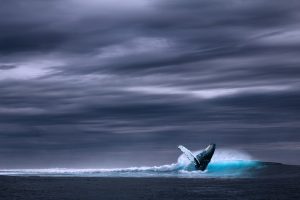
Appearance and other physical characteristics
As you read earlier about the major blue whale facts, the Blue whale does not justify its name and is not exactly blue. They are instead greyish. However, as they dive underwater, the reflection of the sunlight and the natural color of the water makes them look deep blue.
The size of blue whales is huge and they weigh massive. However, they have a sleek body structure that helps them cut through the water with more speed. Moreover, they can swim at a speed of more than 25 miles every hour.
The high speed is however only when the mammal feels they are in danger and are trying to escape. At other times, the average movement speed is about 5 miles per hour. We already know that a blue whale is a baleen whale and so the baleen plates and bristles on its fins work as meshes. They filter the preys and only the proper ones get caught in the fins.
What are the hunting methods and the diet pattern of blue whales?
When we are talking about the blue whale facts and the diet is the main concern, you must know that the major portion of their appetite is allotted to krill. They are tiny, shrimp-like sea animals. However, there are other species of sea insects such as copepods that also form parts of the diet of whales and other mammals.
As you would expect, whales are mostly found in the Arctic Ocean or other such places where the krill population is comparatively more. Another interesting fact about blue whales is that they do not have teeth and so cannot chew their food. They, therefore, use the filter-feeding method to catch prey.
Now, what do you understand by the term ‘filter-feeding’? It is a similar method in which you can filter sand and water. In this case, the net-like features in the fins of a blue whale act like a mesh to take in smaller substances and remove the larger ones. Here, the krill are the smaller particles and the other animals are the larger ones that stay out. Therefore, just as you derive from the name of the method, the blue whales are capable of separating swarms and krill from larger animals so that they can eat easily. As soon as the whale senses the capture of krill in its fins, it pushes away the rest of the water with its tongue. Now, it will swallow the krill that is captured as a whole.
You will be anxious to know why a huge mammal such as a blue whale only survives on such small animals. It is because the size of its esophagus is extremely small and so cannot take in larger animals. Also, it is unable to break down food into smaller particles thus making it more difficult to digest.
Blue whale facts about its migration pattern and habitat choice
You will be surprised to know that there was a time when there was an abundant population of blue whales across the oceans. However, the whaling era of the 17th-20th centuries became a risk for the mammals. The whaling spree became the reason why they now fall under the list of endangered mammal species. Also due to the mass whaling era, the presence of whales has become fragmented across the oceans.
You can still find blue whales in the major oceans of the world such as the Arctic, Pacific, Antarctic, Indian and Atlantic Oceans. However, they have now become rare and scarce and you must be lucky enough to find them now. In the past, when the whaling occupation was not so lucrative, the oceans over the world consisted of almost 400,00-5,00,000 blue whales. So, you can well imagine the amount of reckless killing that the mammals have gone through.
Another habit of the whales is that they tend to move towards cold water during their typical feeding season. It is because the population of krill is comparatively more near the poles during this time. On the other hand, they will come back to the warmer regions during the mating season so that they can go through the process of reproduction in the steady waters.
During the periods of migration, a blue whale is capable of moving thousands of miles at a stretch. Also, while they are moving, the mammals mostly survive on the stored food and fats in their bodies. They get the necessary calories and energy from such stored food only. Moreover, the trips may last until a couple of days to even months. The whole duration depends on the place where they are traveling to their final destination.
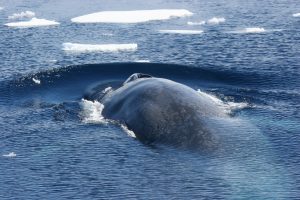
More facts about the habitat and living patterns of the blue whales
Apart from the feeding areas, mammals also spend considerable time in their mating spaces. They tend to spend a couple of months preparing for reproduction and also for the post-birth process. During the whole process, the older and more experienced blue whales travel faster than the rest. It is because they are already accustomed to this migration procedure and know about fat utilization during this period. The new adults follow the older ones and progress accordingly in a group. Also, the older adult whales are more accustomed and familiar with the extreme changes in temperatures while they are migrating.
Where do blue whales live?
The beautiful species of blue whales are mainly found in the deep oceans in the southern and northern hemispheres. It means that you will mainly find them in the Antarctic and Arctic regions during the summer months. The summer months are their typical feeding season during which they will also store excessive foods. The extra food is used during the period of migration post-feeding period.
For the mating period, the blue whales will travel towards the warmer regions such as Channel Islands, Monterrey Bay, Farallon Islands and more. These are all regions towards the Equator. Also, you will find them towards the more tropical areas of Costa Rica and the Mexican Gulf during the mating time. Here they give birth to the live offspring and stay for several months after that till their feeding time arrives. However, a lot of blue whales are restrictive when it comes to nearing the Equatorial regions. It is because they suffer from overheating problems due to their massive size and the presence of fat in their bodies. On average, a gestation period lasts between 10-12 months for a typical adult blue whale. If you want to see Blue Whales and other marine life in their natural habitat, you can go san diego whale watching.
What about the communication and social structures of the blue whales?
You will often find a blue whale migrating in small groups or alone but never with a crowd. Their mode of communication includes whining and moaning in a low-pitched voice which you can hear from miles away. During their mating season, blue whales call in a typical way that is known as mating calls. It means a blue whale is trying to communicate or find other whales who can complete their mating procedure.
The best part is that the whining of the whales can not just be heard from a distance, but also from under the water. Similar cries are also used for communicating the news of loss amongst the whale family. They will call similarly if a mammal dies in their family. Therefore, a mating call is not just communication in search of a mate but also a way in which the blue whales try to express their sadness or sorrow.
Why are blue whales endangered?
Once a female blue whale is impregnated, the gestation period lasts between 10 months to a year. As soon as the gestation period ends, the female will give birth to just one baby whale. An average new-born whale is about 1/3rd the size of an adult whale. It means they are an average of 20-25 ft at the time of birth. The average period after which the baby whale gains maturity ranges from 5-10 years. once they reach a stage of maturity, the mother will stop nursing them and they will also consume normal food. Also, the adult and matured female whale is larger as compared to the male whale.
Before, the main threat to whales was poaching and whaling that was done for their oil, skin and other products. presently, the threats include global warming, pollution and other marine activities that require the use of several advanced types of equipment. Now you know why the number of blue whales has been on a decreasing spree over time.
Final thoughts
Even though the blue whale is the largest mammal in the world, most of us were unaware of the major facts about them. Now, you can read about these giant mammals and also visit places where you can see them.
Writing allows me to pour my heart out in words. So, that’s what I’ve been doing for the past 6 years. I strive to bring in a change in the world by taking tiny steps of curating the right message that needs to be conveyed.
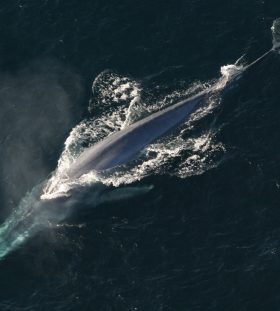
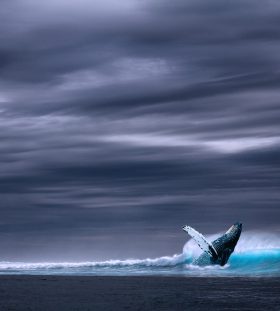
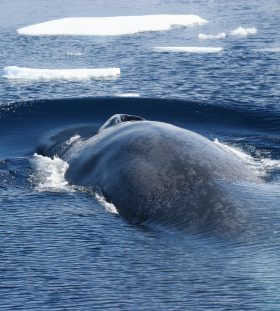 Tagged:
blue whale habitat, blue whale length, blue whale population, blue whale size
Tagged:
blue whale habitat, blue whale length, blue whale population, blue whale size
